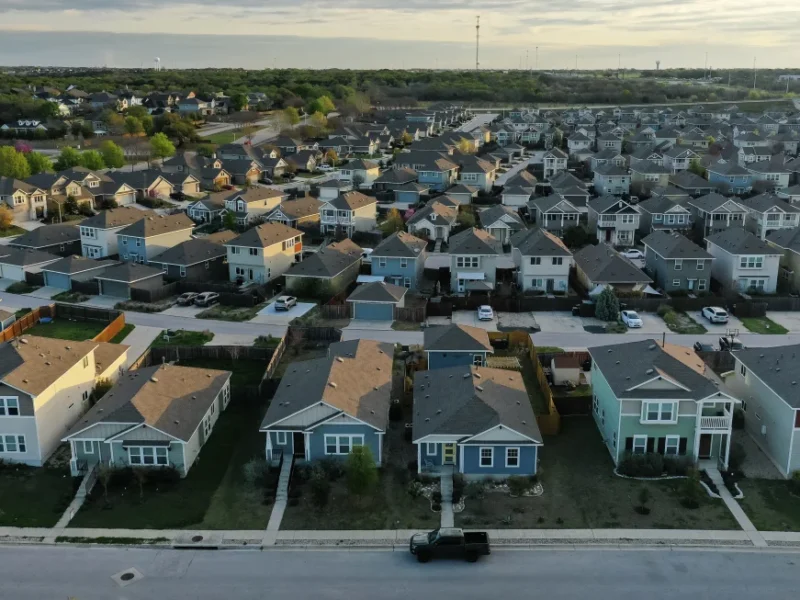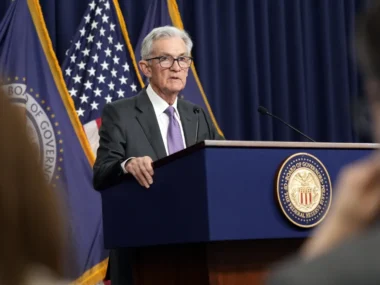Federal Reserve officials have emphasized the need for more compelling evidence showing that inflation is steadily progressing toward the 2% target before considering rate cuts. However, last month’s unexpectedly high Consumer Price Index report contradicts this trend. Consequently, Fed Chair Powell stated on Tuesday that the central bank will refrain from cutting interest rates in the near future.
During a panel discussion with Bank of Canada Governor Tiff Macklem, Powell remarked, “The recent data have clearly not given us greater confidence and instead indicate that it’s likely to take longer than expected to achieve [2% inflation].” Initially, US stocks experienced a decline following Powell’s indication of prolonged higher rates, while Treasury yields reached new highs for the year before moderating.
Despite the intense focus from markets, businesses, and the White House on the timing and extent of rate cuts this year, the likelihood of such cuts appears to be diminishing. Experts suggest that the US economy would struggle to cope with several more months of persistently high interest rates compared to its performance thus far.
Investors are relying on rate cuts.
When Federal Reserve officials initially outlined three rate cuts towards the end of the previous year, markets surged to new highs. The anticipation then was that the first of these cuts might occur as early as March. Lower rates are generally favored by investors because they reduce borrowing costs, potentially boosting profits and providing investors with more capital to invest in the market.
However, as progress on inflation began to stagnate leading up to the last month’s policy meeting, investors shifted their expectations for the start of rate cuts to June. Yet, investors were pleased when officials at last month’s meeting maintained their median forecast for three rate cuts this year, resulting in numerous record highs for major US indexes. Nonetheless, this momentum has since waned. Following last week’s inflation data, which surpassed expectations, the Dow, S&P 500, and Nasdaq Composite have each experienced around a 2% decline in value.
Despite the recent downturn, stock market prices still reflect the anticipation that the Fed will implement rate cuts later this year, according to Itay Goldstein, a finance professor at the University of Pennsylvania’s Wharton School of Business. He noted that there’s a risk that if the Fed doesn’t lower rates, market prices could decline, potentially impacting the broader economy.
Goldstein highlighted the potential spillover effects, such as firms delaying investments or reducing costs in response to stock market declines. For example, Tesla recently announced a 10% reduction in its workforce as its shares have plummeted this year.
Furthermore, market declines may also prompt households to feel less financially secure, leading them to cut back on spending.
Increased likelihood of a recession.
Since the Federal Reserve opted to maintain interest rates at their elevated levels last year following 11 rate hikes, bringing rates to their highest point in over two decades, the central bank’s prevailing stance has been “higher for longer.”
However, according to Goldstein, the longer the Fed keeps interest rates elevated, the more strain it could impose on households and businesses. While this hasn’t been significantly evident thus far—particularly given the recent retail sales report indicating continued consumer spending despite inflation and the highest interest rates in two decades—elevated interest rates typically prompt individuals to save more rather than spend or invest, thus dampening economic activity. Goldstein believes that this risk will increase if the Fed refrains from cutting rates this year. Already, the expectation of prolonged higher rates has driven up US Treasury yields substantially, leading to higher mortgage rates, as exemplified by the brief rise of the 2-year Treasury yield to 5% following Powell’s remarks on Tuesday.
Ultimately, “higher-for-even-longer” rates are likely to raise borrowing costs across the economy, which could negatively impact consumer spending, business investment, and the housing market, as noted by Brian Rose, senior US economist at UBS Global Wealth Management.
However, not everyone shares the belief that the economy will deteriorate if the Fed opts not to cut rates this year. David Mericle, chief US economist at Goldman Sachs, contends that the economy is robust enough to withstand the absence of rate cuts and avoid recession.











